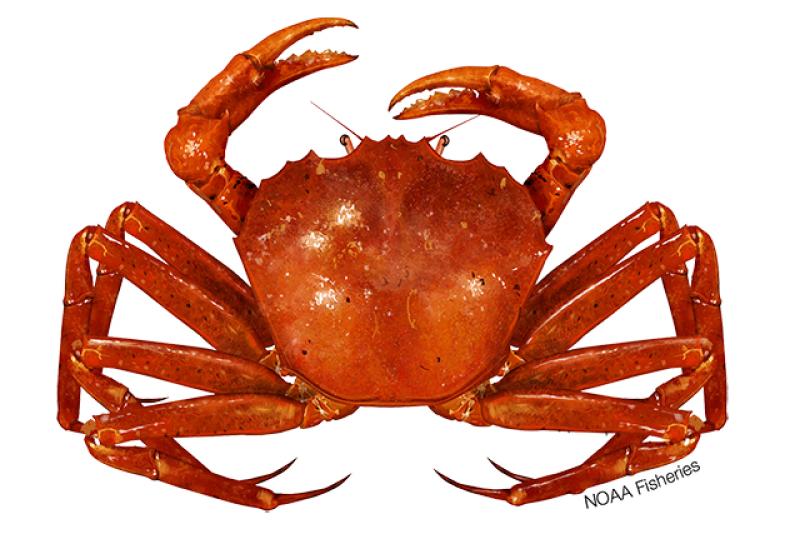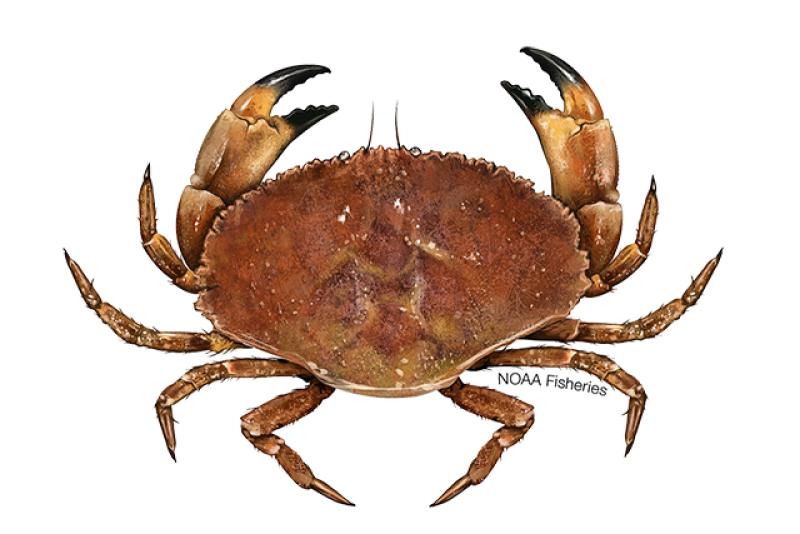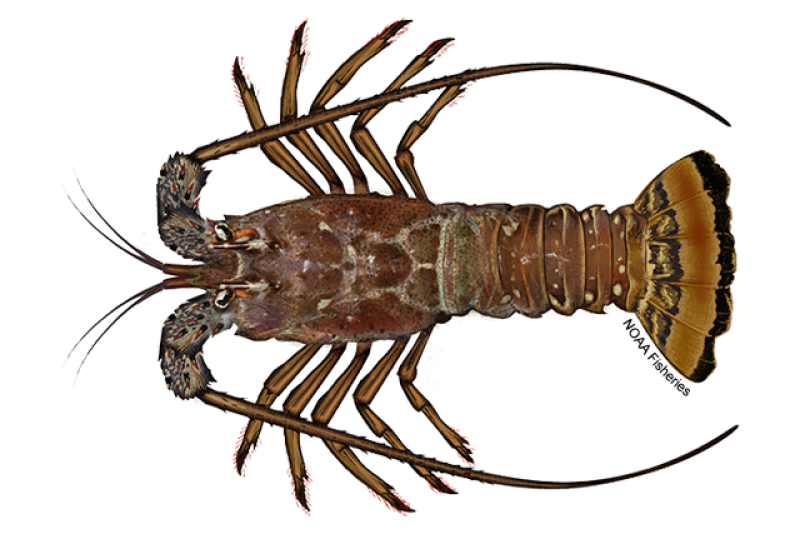Blue Crab
Callinectes sapidus

Quick Facts

About the Species

The blue crab is a highly sought-after shellfish. Blue crabs live up and down the Atlantic Coast and in the Gulf of America (formerly Gulf of Mexico) and are caught by both commercial and recreational fishermen. Its scientific name—Callinectes sapidus—translated from Latin means 'beautiful savory swimmer.'
Blue crabs are the most valuable fishery in the Chesapeake Bay. They are also major predators of benthic communities and are prey for many other fish species. Blue crabs are so treasured in the region that the blue crab is the Maryland state crustacean.
Population Status
- Blue crab populations naturally are highly variable from year to year. In managing blue crab fisheries, resource managers look at overall trends rather than just the number of blue crabs in any given year.
- In the Chesapeake Bay, NOAA, the Virginia Marine Resources Commission, and Maryland Department of Natural Resources work together to conduct stock assessments. A benchmark stock assessment completed in 2011 generated reference points for the female blue crab population in the Bay. Resource managers use this number as a guide when they set regulations each year. An annual Blue Crab Advisory Report (PDF, 31 pages) developed collaboratively by the jurisdictions that manage Chesapeake Bay blue crabs helps decision makers, too.
- Each year, Maryland and Virginia conduct winter dredge surveys to track blue crab population numbers. It’s the only fisheries survey in the Chesapeake Bay that assesses population Bay-wide on an annual basis. The data are examined with respect to the reference points (from the benchmark stock assessment) to determine how the population is doing.
Appearance
- The blue crab’s shell—called the “carapace”—is a blue to olive green.
- Shells can reach up to 9 inches across.
- Blue crab claws are bright blue, and mature females have red tips on their claws too.
- They have three pairs of walking legs and rear swimming legs that look like paddles.
- Blue crabs have an “apron” that covers their abdomen. Males’ aprons are thin; females’ are wider. In the Chesapeake Bay, people often refer to males’ aprons as looking like the Washington Monument while females’ aprons look like the Capitol dome.
Biology
- Blue crabs generally live for 3 or 4 years.
- They reach maturity in 12 to 18 months. Growth rates are affected by water temperature—they grow more quickly in warmer water. In the Gulf of America, crabs may reach maturity within a year. But in the Chesapeake Bay, it may take 18 months.
- Crabs molt—they shed their hard shell—as they grow. Because they lose hard parts during the molting process, it can be difficult to determine the age of a crab. Males molt multiple times during their lives. Females molt once, just before they are ready to mate.
- Blue crabs can grow to about 9 inches across (from tip to tip) their hard shell (carapace). However, they are usually harvested before they reach that size.
- While a blue crab usually weighs about ⅓ pound, the edible portion is much lower. The largest blue crab caught in the Chesapeake Bay weighed 1.1 pounds and was 10.72 inches (tip to tip across the carapace).
- Blue crabs eat almost anything, including clams, oysters, mussels, smaller crustaceans, freshly dead fish, plant and animal detritus—and smaller and soft-shelled blue crabs.
- Crabs are eaten by large fish, some fish-eating birds (like great blue herons), and sea turtles.
- To mate, a male crab cradles a female crab in a pose known as a “doubler” for a few days before the female’s terminal molt. They stay with her after mating until her shell hardens and to ensure another male doesn’t mate with her.
- In the Chesapeake Bay, blue crabs mate and spawn from spring to fall. Females migrate to the mouth of the Bay to spawn and can produce between 750,000 and 3,200,000 eggs per brood.
- Eggs hatch into larvae and go through a series of molts in high-salinity coastal waters and then migrate back into the Bay.
Where They Live
- The blue crab native range is along the Atlantic Coast of the Americas from Nova Scotia to Argentina, including the Gulf of America.
- Within the Chesapeake Bay, male crabs tend to prefer the fresher waters of Maryland and the Bay’s upper tributaries, while females like the saltier waters in the main part of the Bay and in Virginia, closer to the ocean.
- The blue crab uses multiple habitats in the Chesapeake Bay throughout its life. Blue crab habitats include underwater grasses and oyster reefs, and they range from shallow, brackish waters to deeper, saltier waters.
- Blue crab distribution varies with age, sex, and season. They tend to be abundant in shallow-water areas during warm weather. As the water temperature drops each year, they burrow into sediment in the deeper parts of the Bay for the winter.
- Blue crabs are bottom-dwellers that use beds of submerged aquatic grasses as sources of food, nursery habitat for young, and shelter during mating and molting.
Fishery Management
- In the Chesapeake Bay, the blue crab fishery is managed by three jurisdictions:
- Maryland Department of Natural Resources
- Virginia Marine Resources Commission
- Potomac River Fisheries Commission
- To facilitate coordination between these three agencies, the Chesapeake Bay Program’s Sustainable Fisheries Goal Implementation Team brings scientists and resource managers together to talk through the latest science. The NOAA Chesapeake Bay Office chairs the Sustainable Fisheries Team.
- The “Fisheries GIT” created the Chesapeake Bay Stock Assessment Committee, which includes scientists and experts from management agencies and academic institutions around the Chesapeake.
- The Committee discusses the latest blue crab science, reviews and analyzes data for stock assessments, and develops the annual Blue Crab Advisory Report to help inform management decisions.
Scientific Classification
| Kingdom | Animalia | Phylum | Arthropoda | Class | Malacostraca | Order | Decapoda | Family | Portunidae | Genus | Callinectes | Species | sapidus |
|---|
Last updated by NOAA Fisheries on 02/20/2025
Featured News
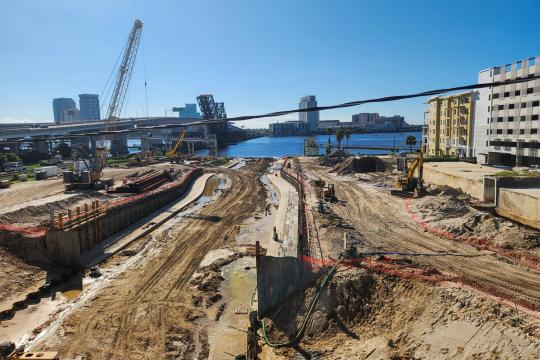 Excavating a new channel for McCoys Creek to replace an 850-foot tunnel that forced the creek underground. Credit: City of Jacksonville
Excavating a new channel for McCoys Creek to replace an 850-foot tunnel that forced the creek underground. Credit: City of Jacksonville
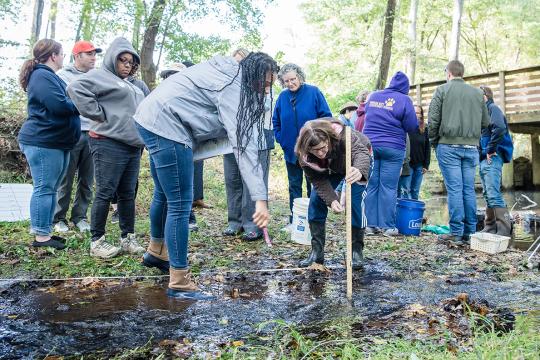 Professional development experiences funded by Chesapeake B-WET give educators the tools they need to help their students become environmentally literate. Photo: Virginia Commonwealth University.
Professional development experiences funded by Chesapeake B-WET give educators the tools they need to help their students become environmentally literate. Photo: Virginia Commonwealth University.
NOAA Funding Supports Chesapeake Bay Watershed Environmental Education
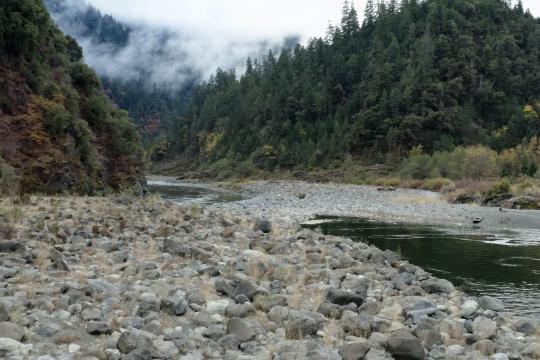 Klamath River. Credit: Shane Anderson.
Klamath River. Credit: Shane Anderson.
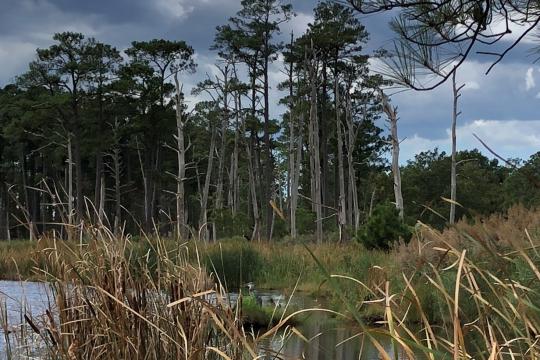 As salt water intrudes into marshy areas, some trees are unable to survive. Photo by Alison Hammer.
As salt water intrudes into marshy areas, some trees are unable to survive. Photo by Alison Hammer.
Recreational Fishing Regulations
In Maryland, the recreational blue crab season runs from April 1 to December 15. Detailed regulations are set by the Maryland Department of Natural Resources.
In Virginia, recreational crabbers can catch crabs all year long using some methods. Crab pots, trotlines, and other gear are limited to certain times. Detailed regulations are set by the Virginia Marine Resources Commission.
On the Potomac River, the recreational blue crab season runs from April 1 to November 30. Detailed regulations are set by the Potomac River Fisheries Commission.
Last updated by NOAA Fisheries on 02/20/2025
Commercial Fishing Regulations
Male and female blue crabs have different life histories, and this affects the catch of blue crabs. For example, the Chesapeake Bay ranges from very fresh water in its headwaters to high salinity waters where the Bay’s mouth opens into the Atlantic Ocean. More female crabs are caught in the lower part of the Bay because they stay in higher-salinity water when they spawn. Males tend to stay in lower-salinity water.
This range of conditions and resulting crab leads the three jurisdictions that manage crabs in the Chesapeake Bay—the Maryland Department of Natural Resources, Virginia Marine Resources Commission, and Potomac River Fisheries Commission—to have slightly different regulations. (NOAA does not set regulations for blue crab harvest in the Chesapeake Bay.) Representatives from all three jurisdictions participate in the Chesapeake Bay Program’s Sustainable Fisheries Goal Implementation Team (Fisheries GIT). Through that team, they discuss the latest blue crab research and harvest and population numbers together and then independently set regulation.
Commercial Gear Information
The majority of the blue crab catch in the Chesapeake Bay is commercial. Blue crabs are usually harvested with simple gear: pot, trotline, handline, dip net, or scrape. Crab abundance tends to be higher in areas with structured habitat, such as submerged aquatic vegetation. Most fishing gear used to catch crabs has little to no effect on habitat.
Last updated by NOAA Fisheries on 02/20/2025
Management Overview
The blue crab fishery is managed by a number of different jurisdictions. In the Chesapeake Bay, blue crabs are managed directly by the Maryland Department of Natural Resources, the Virginia Marine Resource Commission, and the Potomac River Fisheries Commission. Collaboration between these three jurisdictions is essential to sustainable blue crab management on a Bay-wide basis.
The Sustainable Fisheries Goal Implementation Team (Fisheries GIT) of the Chesapeake Bay Program is a forum for discussing fishery policy issues, including blue crab management. The Fisheries GIT includes federal agencies, state fisheries managers, watermen, and additional stakeholders in the Chesapeake Bay. The NOAA Chesapeake Bay Office chairs Fisheries GIT. The goal of the Fisheries GIT is to promote ecosystem-based fisheries management by providing sound science to support informed management decisions across all Bay jurisdictions.
The Chesapeake Bay Stock Assessment Committee, which is part of the Fisheries GIT, meets every year to review the results of annual Chesapeake Bay blue crab surveys and harvest data and to develop management advice. CBSAC's annual Blue Crab Advisory Report provides recommendations to management jurisdictions as they develop regulations for the blue crab fishery.
More Information
Last updated by NOAA Fisheries on 02/20/2025
Documents
Environmental Analysis for Proposed Amendment 50 to the Fishery Management Plan for Bering Sea/Aleutian Islands King and Tanner Crabs: St. Matthew Island Blue King Crab Rebuilding Plan
Analysis of proposed Amendment 50 to the Fishery Management Plan for Bering Sea/Aleutian Islands…
Outreach & Education
Fisheries of the Northeast
More than 100 species, including finfish, shellfish, urchins, and seaweeds, are landed in the…
Last updated by NOAA Fisheries on 02/20/2025
